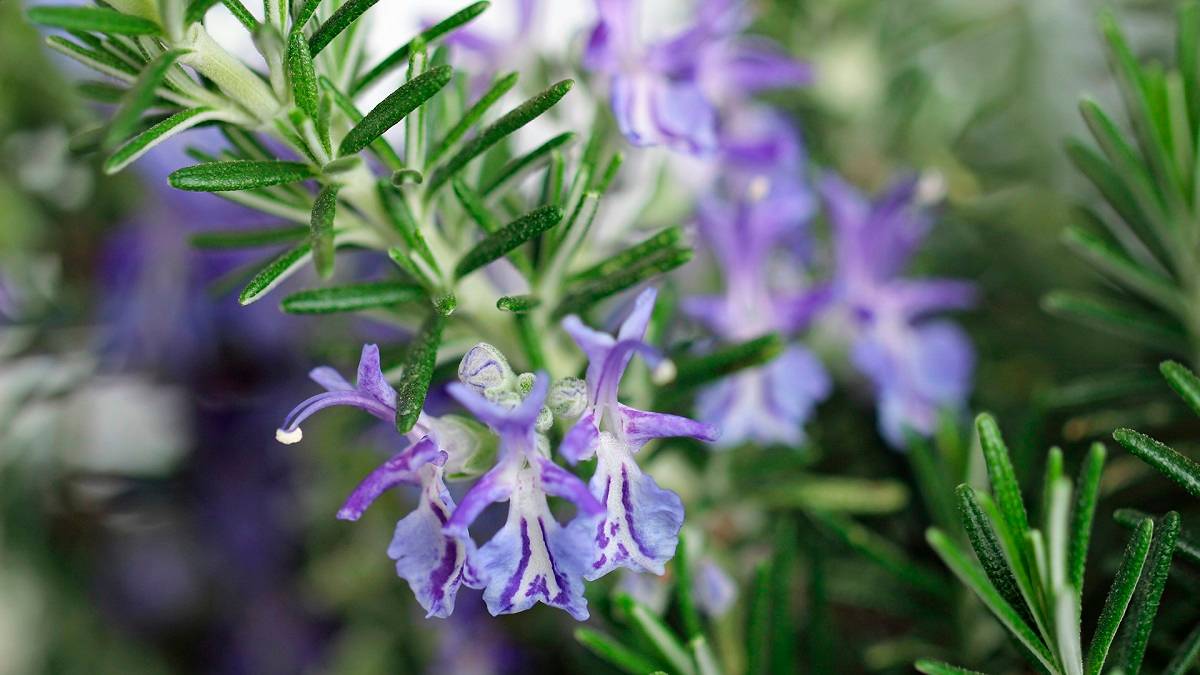
The Mediterranean native rosemary thrives in warm climates with moderate humidity, where it may develop into a shrub that is several feet tall. If given the right environment, rosemary grows so quickly that, if not carefully controlled, it may become a bit of a nuisance.
About Rosemary
Salvia rosmarinus is a perennial, rounded, evergreen shrub that produces the aromatic herb known as rosemary. It has tall, woody stems with thin, gray-green leaves that resemble needles. Although it can bloom at other times of the year as well, it normally blooms in late spring to early summer, producing clusters of tiny, light blue to white flowers.
Description:
|
Common Name |
Rosemary |
|
Botanical Name |
Salvia rosmarinus |
|
Family |
Lamiaceae |
|
Plant Type |
Herb, perennial |
|
Size |
2–6 ft. tall, 2–4 ft. wide |
|
Sun Exposure |
Full sun |
|
Soil Type |
Sandy, loamy, well-drained |
|
Soil pH |
Acidic, neutral |
|
Bloom Time |
Spring, summer |
Rosemary Planting Guide
When to Plant Rosemary?
Rosemary is best planted in the spring when it has warmed up and there is no chance of frost. In general, indoor planting can be taken into consideration during frost.
Choosing a planting location
This aromatic plant thrives well in a sunny location with sharply draining soil. Make sure there aren't any nearby larger trees or plants that may shadow the rosemary. If given adequate light, rosemary may also flourish indoors or outdoors in pots.
Support, Depth, and Spacing
Plant your rosemary bushes at least two to three feet apart. The same depth at which they were growing in their previous container should be used to sow seedlings and nursery plants. Generally, this crop doesn't need much of a supporting structure.
Rosemary Plant Care
Light
Rosemary prefers direct sunlight and cannot tolerate shade. This implies that on most days, it needs at least six hours of direct sunshine. For indoor development, a south-facing window is best, although grow lights are frequently required to supplement natural light. When it's nice outside, take inside plants so they can get some sunlight. Leggy and feeble development may result from inadequate lighting.
Soil:
The optimal soil pH ranges from mildly acidic to neutral i.e., 6.0 to 7.0. The optimum soil for rosemary is well-draining sandy or loamy soil. It struggles to thrive in moist, thick clay soils.
Water:
Once established, rosemary bushes can withstand drought well, thus it is preferable to drown them as opposed to overwater them. Between waterings, let the top few inches of soil dry out, and then water to evenly moisten but not flood the soil.
Temperature and Humidity:
Warm temperatures and average humidity levels are ideal for this plant. The majority of rosemary types have strong heat tolerance but cannot tolerate temperatures below 30 degrees. They love environments that are bound to high temperatures.
High humidity can cause rot and fungal problems, particularly if there is insufficient air circulation around the plant.
Fertilizer:
Rosemary doesn't require much fertilizer intake. Compost added to the soil when planting can help the shrub get off to a good start. After that, using a balanced liquid fertilizer as directed on the package will keep encouraging quality growth.
Pollination:
It is a self-pollinating crop and draw bees and other insect pollinators to the garden. When the weather is nice and the flowers are open, take indoor plants outside so that pollination can occur spontaneously.
Harvesting of Rosemary
Though it grows most vigorously in the spring and summer, rosemary may be gathered practically any time of year. And just before the plant blooms, the leaves are at their most tasty and fragrant. Use pruners to remove the 4- to 6-inch stem tips before harvesting.
You may cook with fresh rosemary leaves or sprigs as you prefer. Alternatively, you may hang the stems upside-down in a dry, cold, well-ventilated room for a few weeks to dry them out. After the stems have dried, remove the leaves and store them in a pantry in an airtight container.
Processing of Rosemary Leaves:
The leaves are picked in the soil, and washing three times is recommended to remove the dust. followed by drying in the shade. Within 10 to 15 days, the Nilgiris dried up. To keep the concrete floor dry, simple areas with dried leaves and other debris require airflow from an electric fan. With 10% moisture, it is possible to obtain good-quality leaves in three days. The food's quality is to be preserved in polyethylene bags.
-
Is it simple to cultivate rosemary?
As long as it receives enough light, warmth, and soil drainage, rosemary may thrive easily.
-
How long does it take rosemary to grow?
The second growing season is when rosemary will reach its full size and start to bloom.
-
Does rosemary grow every year?
Evergreen perennial rosemary has a long lifespan within its hardiness range.
















